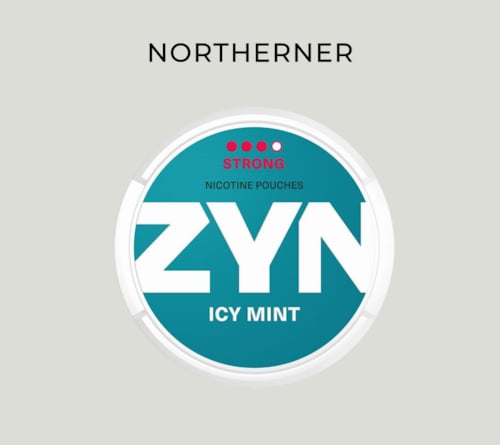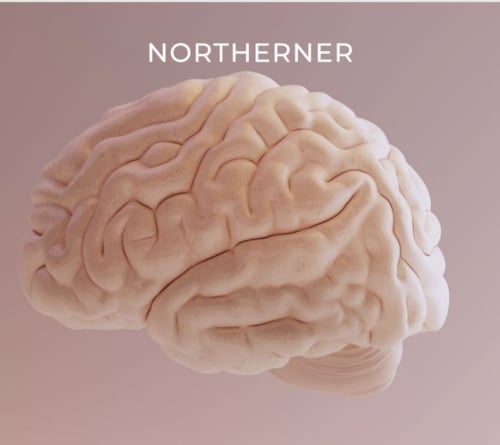Published 2022-05-06
Last update 2025-01-22
How to Quit Snus
Quitting snus pouches is a huge decision, one that requires determination, planning, and a solid support system. The journey can feel daunting, but the rewards—better health, freedom from addiction, and financial savings—are well worth the effort.

Key Points
- Quitting snus takes planning, patience, and a strong support system — but the benefits are worth it.
- Expect withdrawal symptoms like cravings, mood swings, and fatigue — but they ease with time.
- From nicotine-free pouches to CBT, mindfulness, and support groups — there are proven tools to help you stay on track.
What Happens When You Quit Snus: A Timeline
While there are many different methods to quit snus, nicotine replacement therapy (NRT) is a popular method, providing nicotine without harmful tobacco ingredients. Nicotine gum and nicotine patches are effective alternatives for managing cravings. Here’s an updated, easy-to-follow guide to help you quit snus and stay on track. Whether you’re just starting or trying again, we’ll walk you through what to expect and give you tips to make the process as smooth as possible.
Day 1-3: The Nicotine Withdrawal Symptoms Begin
The first few days without nicotine are tough - your body is in shock. Common nicotine withdrawal symptoms such as dizziness, nausea, and irritability may occur, and you might struggle to concentrate. Sleep might be elusive, and cravings will be strong.
Why? Nicotine raises your blood pressure and constricts your blood vessels, so when you stop, your body adjusts by lowering blood pressure, leading to dizziness. Cravings and sleeplessness come from your brain signaling it wants its usual “hit.”
Pro Tips:
- Stay hydrated with water or electrolyte drinks to combat dizziness.
- Snack on small amounts of sugar (like fruit or a glucose tablet) to stabilise energy.
- Nicotine-free pouches or chewing gum can be used as a temporary substitute to mimic the habit without feeding the addiction.
“The first step is always the hardest - keep going. Every hour nicotine-free is a win!”

Day 4-5: The Worst Is Over
Physical withdrawal symptoms begin to ease, but headaches and mental cravings might persist. Your brain is still trying to figure out how to cope without nicotine, which it associates with pleasure and stress relief.
How to Stay Strong:
- Use distractions when cravings hit—go for a walk, call a friend, or chew gum. Nicotine-free chewing gum can be particularly effective in providing relief from withdrawal symptoms and serving as a replacement behavior.
- Reflect on your progress so far. Remind yourself of why you started this journey.
- Several different apps can demonstrate the money you’ve saved so far as well.

Day 6-7: Nicotine Cravings, Sugar Cravings & Mood Swings
Nicotine affects your metabolism and blood sugar, so quitting can cause sugar cravings and increased appetite. Irritability and mood swings may also peak here - imagine how it feels when you're "hangry," but amplified.
Manage This Stage:
- Keep healthy snacks nearby (like nuts, fruits, or veggies) to combat cravings.
- Stick to a routine: eat regular meals to keep blood sugar stable and minimise mood swings.
- Celebrate this milestone! A week without nicotine is a massive achievement.

Week 1-2: Mood Swings & Blood Sugar Battles
Even as nicotine leaves your system, its effects linger. Blood sugar instability can still trigger irritability, and cravings may strike unexpectedly, often tied to habits (like finishing a meal or waiting for the bus).
Stay Ahead:
- Open up to friends, family, or colleagues. Let them know you're quitting so they can support you during mood swings.
- Keep a list of reminders about why you're quitting (health, finances, freedom) and read it when cravings hit.
- You can find a large number of apps that help you battle mood swings and blood sugar changes for all kinds of smartphones.

Week 4: Signs of Progress
By now, you might notice your gums and oral health improving—especially if snus caused receding gums or other issues. Cravings may still hit during certain triggers (like social settings or drinking alcohol), but they're becoming less intense.
Tips for Tricky Moments:
- Avoid alcohol if it weakens your resolve. Swap a pub night for a different social activity like bowling or dinner at home.
- Plan ahead for cravings - keep nicotine-free pouches or a comforting habit, like sipping tea or texting a friend.

Week 4-6: The 40-Day Crisis
This is a critical point where old habits feel harder to shake. You've likely formed rituals around nicotine use—after meals, during breaks, or when unwinding—and your brain may still associate those moments with snus.
What Helps:
- Identify your triggers and replace them with new habits. For example, chew gum after dinner instead of reaching for a pouch of chewing tobacco.
- Quitting chewing tobacco can be particularly challenging due to strong urges shortly after stopping. It's crucial to replace old habits with new routines to manage these triggers effectively.
- Stay patient. Mood swings, sugar cravings, and headaches are still possible but will fade soon.
- Remind your loved ones that quitting nicotine is a process, and their understanding matters.

Week 7-8: A New Normal
You're entering a smoother phase—cravings are less frequent, and your mood is stabilising. You may still feel moments of fatigue, but they're often fleeting.
Reinforce progress:
- Exercise to boost energy and release endorphins. Even a brisk walk can do wonders.
- Treat yourself—whether it's a massage, a nice meal, or a small splurge with the money you've saved by quitting snus.

Week 12-13: Nicotine-Free and Thriving
After three months, you've hit a major milestone. By now, life without nicotine feels normal. While the occasional craving may pop up, especially during high-stress situations, you've built the resilience to resist.

Final Thoughts:
- Stay mindful of triggers; addiction can resurface when you least expect it.
- Reflect on how far you've come and the benefits you're experiencing, like better health, more energy, and financial savings.
“You didn't come this far just to come this far. Keep going—you're winning!”
10 Tips to Succeed in Quitting Snus
- Be prepared: Read guides like this one, join online communities, and plan for challenges.
- Find your “Why”: Whether it's health, saving money, or setting a good example, keep your reason front and center.
- Seek support: Lean on friends, family, or quit-smoking apps for encouragement.
- Manage stress: Replace nicotine with healthy stress relievers like exercise, music, or a hobby.
- Avoid triggers: Identify when you're most tempted (alcohol, boredom, etc.) and plan alternatives.
- Stay active: Physical activity reduces cravings and improves your mood.
- Eat healthy: A balanced diet keeps blood sugar stable and reduces sugar cravings.
- Reward yourself: Celebrate your progress - treat yourself to something fun with your savings.
- Replace the habit: Try nicotine-free pouches or gum to ease the transition.
- Don't give up: If you slip, it's not failure—it's part of the process. Learn from it and try again.
Quitting snus is tough, but every step you take is a step toward freedom. Remember, the discomfort is temporary, but the benefits last a lifetime.
Optional Ways to Quit: Finding What Works for You
Quitting nicotine is not a one-size-fits-all journey. What works for one person might not work for another, and that’s okay. In addition to traditional methods like nicotine-free pouches, nicotine pouches, exercise, and behavioral changes, there are a variety of alternative therapies and treatments that can make the process easier. Understanding one's dependence on nicotine products, including nicotine pouches, is crucial. Here are some strategies to quit nicotine pouches, such as reducing nicotine intake, using nicotine replacement therapy, and establishing support systems to manage cravings and ease the transition.
Here are some optional methods to consider:
1. Laser Acupuncture Therapy
Laser acupuncture is a modern, needle-free alternative to traditional acupuncture. It involves using low-level lasers to stimulate specific points on the body, which can help reduce cravings, stress, and withdrawal symptoms. Many people find it relaxing, and it's worth exploring if you're open to complementary therapies.
Why it works:
Laser acupuncture is believed to influence endorphin levels and re-balance the body's nervous system, reducing the intensity of cravings.
Tip: Find a certified practitioner experienced in addiction therapy for the best results.
2. Cognitive Behavioural Therapy (CBT)
CBT is a structured form of talk therapy that helps you identify and change the thought patterns and behaviors associated with nicotine use. It's particularly effective for managing the mental cravings and emotional triggers that come with quitting.
How it helps:
CBT teaches you practical coping strategies, like reframing negative thoughts (“I can't do this” becomes “I'm proud I've made it this far”) and finding healthier ways to deal with stress or boredom.
3. Support Groups and Peer Coaching
Sharing your experience with others who are also quitting can be incredibly empowering. Look for local or online support groups for people quitting nicotine. Peer coaching apps like Quit Genius or forums like Reddit's r/stopsmoking can also be helpful.
How it helps:
Hearing others' stories and getting advice from people who've been through the same journey can keep you motivated and offer practical tips.
4. Medication and Prescription Support
If quitting feels overwhelming, consult a doctor about prescription aids, including nicotine patches as a form of nicotine replacement therapy recommended by rehab doctors. Some prescription medications are specifically designed to help reduce nicotine cravings and withdrawal symptoms.
How it helps:
These medications work by altering the brain’s response to nicotine, making it less satisfying or reducing withdrawal effects, and can be particularly helpful for those facing the challenge of quitting smokeless tobacco.
5. Mindfulness and Meditation
Practicing mindfulness helps you focus on the present moment and develop a healthier relationship with your thoughts and emotions. Guided meditation apps like Calm or Headspace offer specific programs for overcoming addiction.
Why it works:
Mindfulness can help you stay grounded during cravings and reframe your relationship with nicotine, making it easier to let go.
The Bottom Line: Tailor Your Approach
Quitting nicotine is personal, and the best method is the one that works for you. Whether it's laser acupuncture, therapy, or joining a support group, explore different options and don't hesitate to combine methods for a well-rounded approach.
If one strategy doesn't work, don't give up—try another. The key is persistence and finding what resonates with your lifestyle and goals.
You've got this!
Related articles




